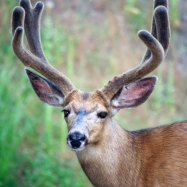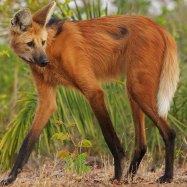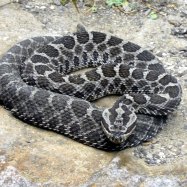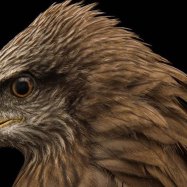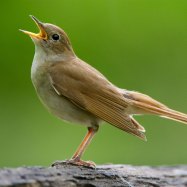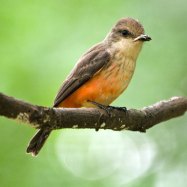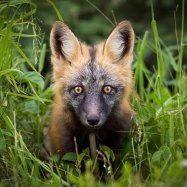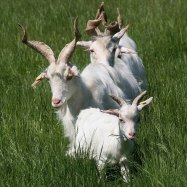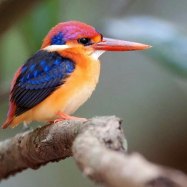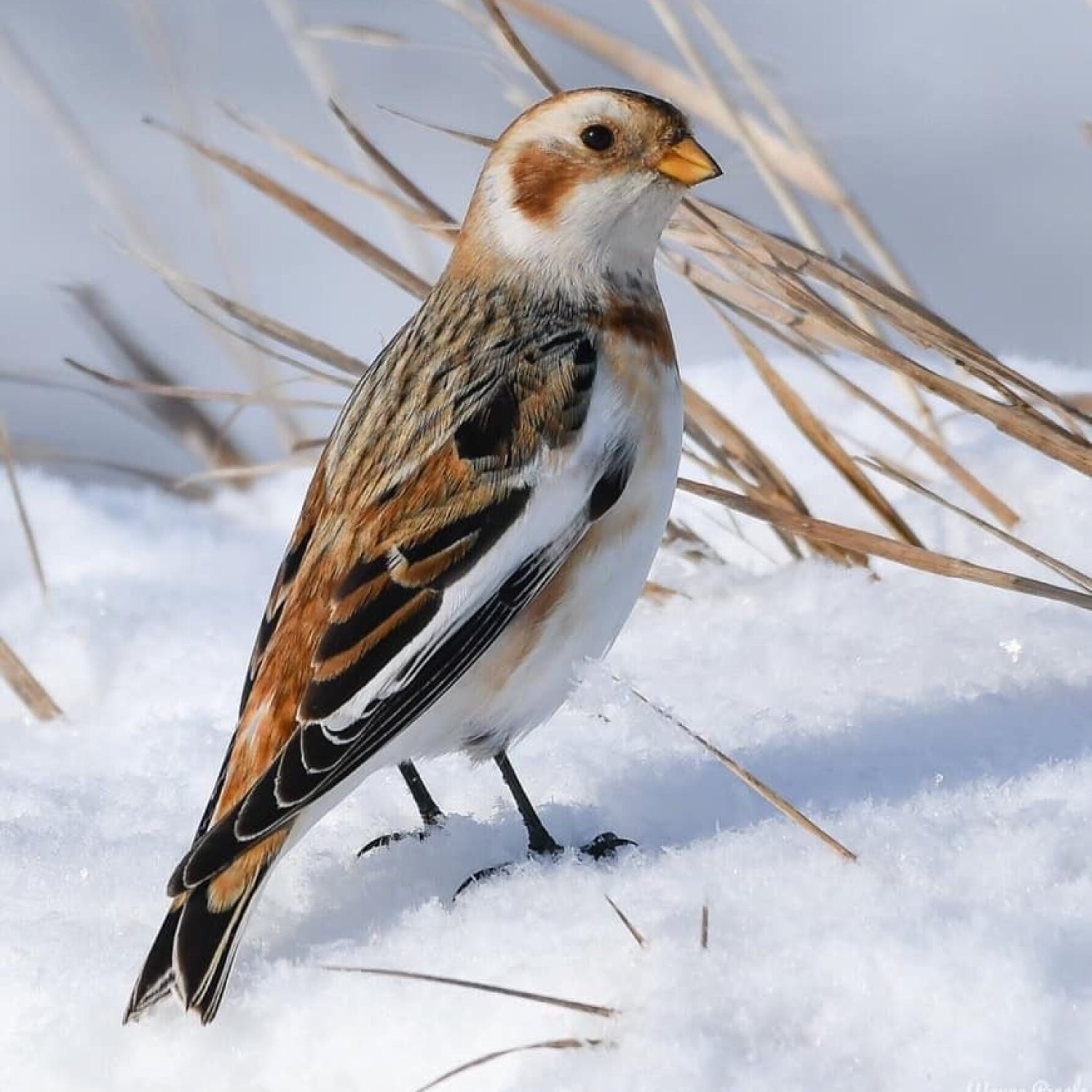
Snow Bunting
16 - 18 cm
The Snow Bunting is a small and compact bird that can be found in the Arctic tundra, rocky coasts, and alpine meadows. With a length of 16-18 cm, this member of the Calcariidae family is known for its beautiful plumage and melodic songs. Keep an eye out for the Snow Bunting on your next arctic adventure! #SnowBunting #ArcticBirds #WildlifeWonder
Animal Details Summary:
Common Name: Snow Bunting
Kingdom: Animalia
Habitat: Arctic and alpine regions
Snow Bunting: The Adorable Arctic Avian
The vast and harsh Arctic and alpine regions of our planet are home to some of the most unique and resilient animal species. One such remarkable creature is the Snow Bunting, scientifically known as Plectrophenax nivalis. This charming bird is a true testament to the adaptability and survival instincts of the animal kingdom. With its striking appearance and endearing behavior, the Snow Bunting has captured the hearts of wildlife enthusiasts and researchers alike Snow Bunting.Kingdom, Phylum, and Class
The Snow Bunting belongs to the Animalia kingdom, which includes all animals on Earth. It falls under the Chordata phylum, which comprises animals with a notochord, flexible rod-like structure, during embryonic development. As an avian species, the Snow Bunting belongs to the Aves class, which has over 10,000 species of birds.Order and Family
The Snow Bunting is a part of the Passeriformes order, which also includes around 60% of all bird species. This order is known for its characteristic three forward-facing toes and one rear-facing toe, perfect for perching and gripping branches. Within the Passeriformes order, the Snow Bunting belongs to the Calcariidae family, which has only two other species. Interestingly, the Snow Bunting is the only member of this family that is widely distributed across the world.Distribution and Habitat
The Snow Bunting can be found in the northern parts of North America, Europe, and Asia. They are known to have a circumpolar distribution, meaning that they are present in countries located around the North Pole Scallops. This includes Canada, Russia, Norway, Sweden, Iceland, Greenland, and the United States.Within these regions, the Snow Bunting can be found living in a variety of habitats such as the Arctic tundra, rocky coasts, and alpine meadows. These birds are highly adaptable and can thrive in extreme and challenging environments. They are also known to migrate to lower latitudes during the winter months, making them a true global traveler.
Feeding Method
The Snow Bunting is an omnivorous bird, meaning that it feeds on both plants and animals. In the summer months, their diet primarily consists of arthropods, such as insects and spiders, found in their Arctic and alpine habitats. They are also known to supplement their diet with seeds and plants.During the winter, when food sources are scarce, the Snow Bunting relies heavily on its omnivorous diet. They forage on whatever is available, such as seeds, buds, and insects. The ability to switch between a variety of food sources makes the Snow Bunting resilient and adaptable in the face of changing environments.
Appearance and Body Shape
One of the most captivating features of the Snow Bunting is its beautiful plumage. This bird has a unique and distinctive appearance, with its white and brown feathers. It has a mostly white body, accented with brown-colored streaks on its wings and back. This coloration is crucial for their survival as it provides excellent camouflage against the snow and rocks in their habitat.The Snow Bunting has a small and compact body shape, measuring between 16-18 cm in length. This body shape helps them conserve energy and stay warm in the freezing Arctic temperatures. Their sturdy little frame is perfect for navigating through rocky and uneven terrain, which is a common occurrence in their habitat.
Country of Origin
The Snow Bunting is known as a native species to the Northern Hemisphere, particularly in the Arctic and alpine regions. They are believed to have originated from a common ancestor of the two other members of the Calcariidae family. Over time, they have adapted to various environments and have spread across the globe, making them a truly global species.Fascinating Facts about the Snow Bunting
- The name "Snow Bunting" is derived from the Old English words "snow" and "buntling," which mean snow-colored bird.- The Inuit people of the Arctic have a legend that the Snow Bunting was once a young girl who refused to marry a hunter. As a punishment, the gods turned her into a bird that could only sing the same three-note song.
- The Snow Bunting has a unique courtship ritual where the male bird performs an aerial courtship display above the female, singing its three-note song while flying.
- These birds have small holes in the sides of their beaks, which are used to store food during the winter months.
- Snow Buntings have been observed traveling up to 600 miles in a single day during their migration to lower latitudes.
The Significance of Studying Snow Buntings
The Snow Bunting is considered a flagship species, meaning that they provide an important indicator of the overall health and well-being of their habitat. They are also a vital part of the food chain and play a critical role in pollination and seed dispersal. By studying their behaviors, researchers can gain insight into the effects of climate change on Arctic ecosystems, and how these birds are adapting to these changes.The Future of the Snow Bunting
The Snow Bunting faces several threats to its survival. One major concern is climate change, as it directly affects their Arctic and alpine habitats. Rising temperatures and changes in precipitation patterns can disrupt their breeding and migration patterns, making it difficult for them to find food and suitable nesting sites.These birds are also at risk from human activities such as oil exploration and hunting. As more companies look to exploit resources in the Arctic, the Snow Bunting's habitat is being threatened. Additionally, hunting for subsistence, sport, and commercial purposes also poses a threat to their population.
Fortunately, efforts are being made to conserve the Snow Bunting and its habitat. Organizations such as the Arctic Biodiversity Data Service and the Arctic Council are working towards preserving this species and its fragile ecosystem. These efforts include habitat protection, research and monitoring, and community engagement to promote sustainable practices.
In conclusion, the Snow Bunting is a remarkable and unique avian species that has adapted to some of the harshest environments on our planet. With its striking appearance, graceful movements, and resilient nature, it has captured the hearts of many. As we continue to study and learn more about these birds, it is important to do our part in protecting their habitat and ensuring their survival for generations to come.

Snow Bunting
Animal Details Snow Bunting - Scientific Name: Plectrophenax nivalis
- Category: Animals S
- Scientific Name: Plectrophenax nivalis
- Common Name: Snow Bunting
- Kingdom: Animalia
- Phylum: Chordata
- Class: Aves
- Order: Passeriformes
- Family: Calcariidae
- Habitat: Arctic and alpine regions
- Feeding Method: Omnivorous
- Geographical Distribution: Northern parts of North America, Europe, and Asia
- Country of Origin: Various countries in the Northern Hemisphere
- Location: Arctic tundra, rocky coasts, and alpine meadows
- Animal Coloration: White and brown plumage
- Body Shape: Small, compact
- Length: 16 - 18 cm
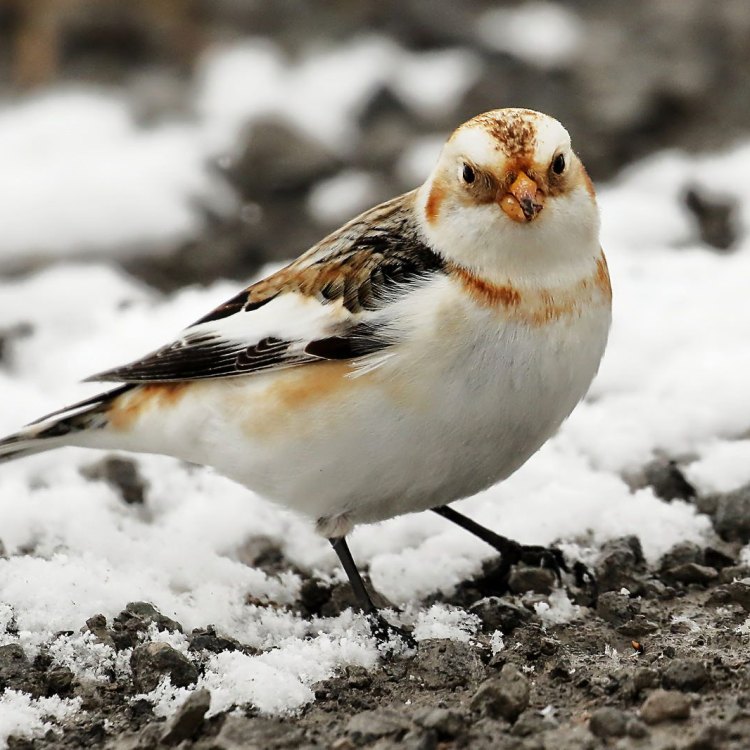
Snow Bunting
- Adult Size: Small
- Average Lifespan: 4 - 10 years
- Reproduction: Monogamous
- Reproductive Behavior: Nest on the ground
- Sound or Call: Musical twittering
- Migration Pattern: Long-distance migratory
- Social Groups: Form flocks during the non-breeding season
- Behavior: Active during the day
- Threats: Habitat loss, climate change, predation
- Conservation Status: Least Concern
- Impact on Ecosystem: Important indicator species for Arctic and alpine ecosystems
- Human Use: Birdwatching, tourism
- Distinctive Features: White plumage with black wingtips, yellow bill
- Interesting Facts: Snow Buntings can survive in extremely cold temperatures and are known to roost in snow banks.
- Predator: Arctic fox, polar bear, birds of prey
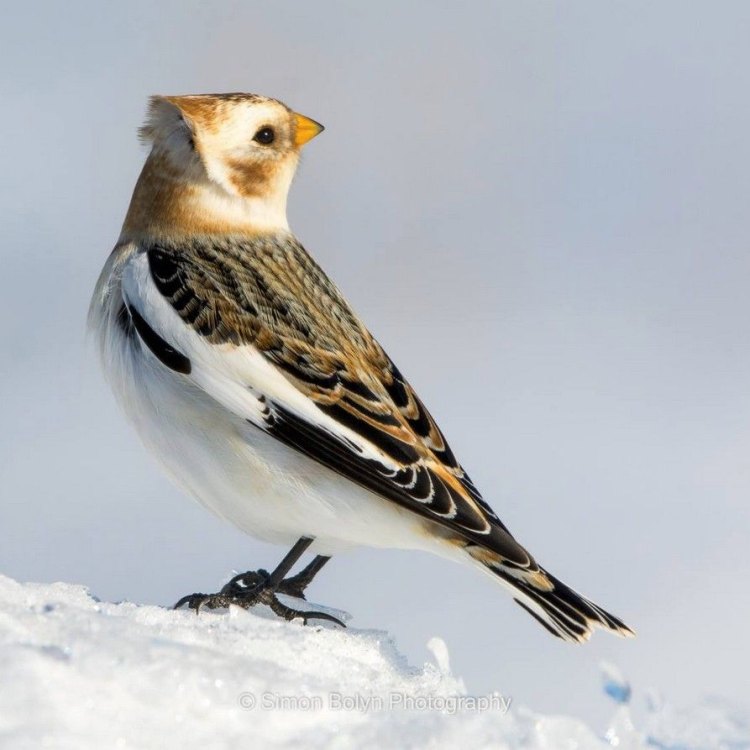
Plectrophenax nivalis
The Beautiful Snow Bunting: A Symbol of Endurance and Adaptability
The snow-covered tundra, a desolate and harsh landscape, seems like an unlikely place for a small bird to thrive. But in the Arctic and alpine regions, the snow bunting (Plectrophenax nivalis) does just that. This petite but hardy bird has captured the hearts of birdwatchers and scientists alike with its striking appearance and fascinating behaviors.From its unique migratory patterns to its monogamous breeding habits, the snow bunting has many distinctive features that make it stand out in the animal kingdom PeaceOfAnimals.Com. In this article, we will delve deeper into the world of the snow bunting and explore its life, behaviors, and significance in the ecosystem.
The Perfect Adaptations for the Cold
The snow bunting is a small bird, measuring only 6-7 inches in length. As its name suggests, its plumage is mostly white, with black wingtips and a yellow bill. This coloration serves as excellent camouflage in the snowy landscapes, making it difficult for predators to spot them.But the snow bunting's adaptations for the cold go beyond its appearance. It has a thick layer of feathers that helps to insulate its body and keep it warm in the harsh tundra environment. It also has a high metabolic rate that allows it to generate and maintain body heat in extremely low temperatures.
One of the most incredible abilities of the snow bunting is its ability to roost in snow banks. In the winter, when temperatures can drop to -40 degrees Fahrenheit, these birds will burrow into the snow to sleep, using their body heat to create a cozy refuge from the cold Savannah Sparrow. This unique behavior adds to the snow bunting's charm and resilience, making it a true survivor in its frigid habitat.
Celebrating Love in the Tundra: Monogamous Breeding Behavior
During the spring and summer months, a different side of the snow bunting is revealed. They shed their white plumage and replace it with a vibrant mix of brown, black, and white. The male birds also develop a distinctive black and white head pattern during this time.But what is most notable about the snow bunting's breeding season is its monogamous behavior. These birds mate for life, and each year, they will return to the same breeding grounds to build their nests and raise their chicks. This level of commitment and loyalty is a rare sight in the animal kingdom, making the snow bunting's reproductive behavior even more intriguing.
After mating, the female will lay a clutch of 3-7 eggs on the ground, usually in a shallow depression lined with grass and feathers. Both parents will take turns incubating the eggs for about two weeks, and once hatched, they will work together to feed and protect their young until they are ready to fledge.
A Serenade on the Tundra: Musical Calls of the Snow Bunting
If you have ever had the chance to hear the snow bunting's song, you know that it is a melodious treat for the ears. The male birds, in particular, are known for their musical twittering calls, which they use to attract mates and defend their territory.Their song is so distinct and pleasing that it has inspired composers and poets throughout history. In fact, the German composer, Ludwig van Beethoven, was so taken by the snow bunting's song that he incorporated it into one of his famous symphonies.
This musical prowess adds another layer of fascination to the snow bunting and only adds to its charm as a symbol of endurance and beauty in the frigid tundra.
The Great Wanderers: Long-Distance Migration of Snow Buntings
As the weather turns colder and resources become scarce, the snow bunting embarks on an incredible journey. They are long-distance migratory birds, traveling over long distances in search of food and suitable breeding grounds.In North America, the snow bunting breeds in the Arctic tundra and then migrates south for the winter, sometimes as far as the southern United States. In Europe and Asia, they breed in the Arctic and subarctic regions and then migrate to more temperate regions in the winter.
What is remarkable about their migration is that they are one of the few bird species that migrate both north and south. Most other migratory birds travel in one direction only, either to the north or south, depending on the season. This unique behavior makes the snow bunting a challenging species to study for scientists, but also adds to its allure and mystery.
Together in Tough Times: The Social Behavior of Snow Buntings
During the breeding season, snow buntings are mostly solitary birds, but during the non-breeding season, they form flocks with other snow buntings and other small bird species. These flocks can range from a few birds to a few hundred and are essential for the survival of the species.Forming flocks allows snow buntings to share their knowledge of food sources and find protection in numbers. It also helps to conserve energy during harsh winter conditions, where survival can be challenging for a small bird like the snow bunting. This social behavior is yet another fascinating aspect of this remarkable bird.
The Perils of Living in a Changing World
Despite their resiliency and adaptability, snow buntings face many threats in their Arctic and alpine habitats. One of the most significant threats is habitat loss, caused by human activities such as oil exploration, overgrazing, and development.Climate change is also a major concern for the snow bunting. As global temperatures rise, their breeding grounds become more unpredictable, making it harder for them to successfully raise their offspring. Climate change also affects the availability of food sources, which can impact the survival of these birds.
Predation is another significant threat to snow buntings, as they are preyed upon by animals like arctic foxes, polar bears, and birds of prey. This threat is increased when their breeding grounds become more accessible due to human activities, making them more vulnerable to predation.
Conservation Status and Ecological Significance
Despite these threats, the snow bunting has been classified as a species of Least Concern by the International Union for the Conservation of Nature (IUCN). This classification means that the species is not currently facing significant conservation concerns globally.However, this does not mean that we can be complacent in protecting these beautiful birds. As an important indicator species for Arctic and alpine ecosystems, the survival of snow buntings is crucial for the health and balance of these fragile environments.
Snow buntings play a critical role in pollination and seed dispersal, helping to maintain the delicate balance between plants and animals in their habitat. They also provide food for predators, contributing to the diversity and stability of the food chain in the tundra.
A Source of Wonder and Inspiration
The snow bunting's unique features, behaviors, and ecological significance have captured the attention and admiration of humans for centuries. From the Inuit people, who refer to them as "the bird that never fails," to the modern-day birdwatchers and researchers, this plucky little bird has left a lasting impression on those who have encountered it.For many, the snow bunting serves as a symbol of resilience, adaptability, and unconditional love. Its ability to survive and thrive in the harshest of environments is a reminder of the strength and determination that exists in the face of adversity.
So the next time you see a snow bunting flying across the snowy tundra or hear its sweet, musical song, take a moment to appreciate the remarkable journey and significance of this beautiful bird. And remember to do your part in protecting these incredible creatures and their fragile ecosystems for generations to come.
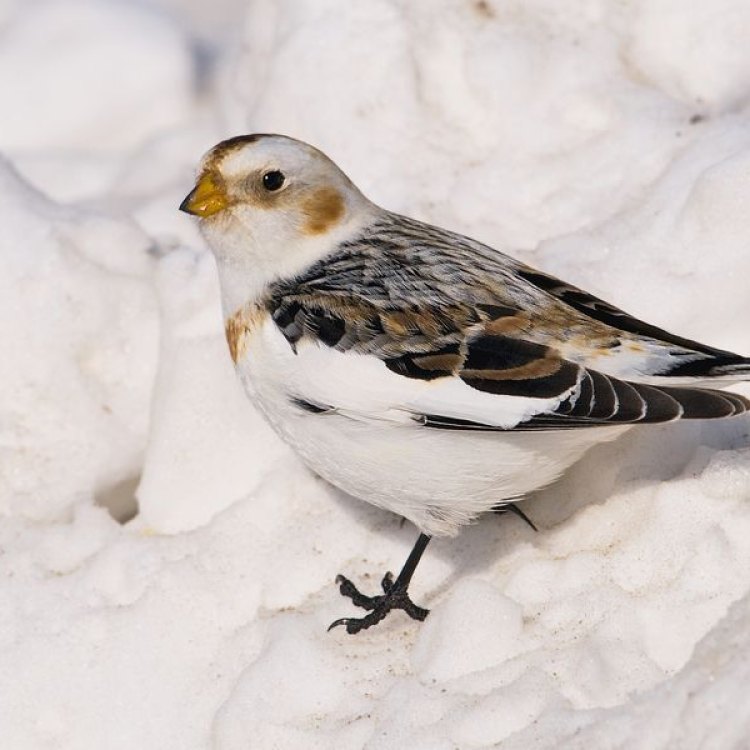
Snow Bunting: The Adorable Arctic Avian
Disclaimer: The content provided is for informational purposes only. We cannot guarantee the accuracy of the information on this page 100%. All information provided here may change without prior notice.

